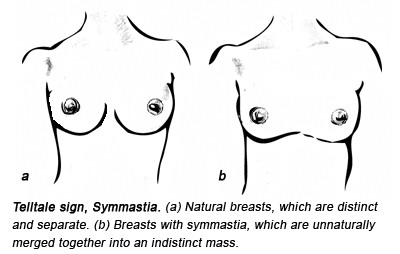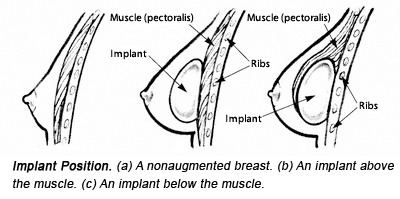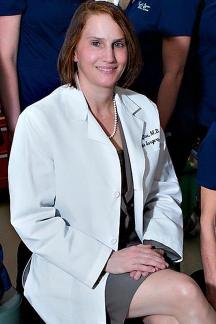Loftus Plastic Surgery Center
Natural Results from a National Expert
Right Here In Cincinnati and Northern KentuckySchedule a
Consultation
513-793-4000
859-426-5000
Breast Aug FAQs
Some Great Answers from Dr. Loftus
Do Implants Really Drop After Surgery?
Internet chat rooms and message boards are flooded with discussion of implants "dropping" a few weeks after surgery. In most cases, this is not what is happening. Realize that after surgery (especially sub-pectoral placement), your body will deposit fluid into the implant pocket, causing swelling above and around the implant, resulting in a bulge above the implant. Some assume this bulge is the implant, but it is usually the fluid around the implant. As the swelling (serous fluid) resorbs, it will appear as though the implant has dropped, but it has not. It was most likely in the same position as it was all along.How can I get tight cleavage?
Cleavage refers to the distance between the breasts, not to breast size. By way of cultural values, when the breasts are close together, they are considered to have attractive cleavage. For this reason, many women hope to gain tight cleavage as a result of breast augmentation. Unfortunately, this is not always possible. The likelihood of attaining tighter cleavage is somewhat dependent upon pre-operative cleavage. Women who start with widely spaced breasts before surgery should expect little or no improvement in cleavage, as the attachments of the pectoralis muscle to the ribs and sternum typically prevent tight cleavage. Implant placement over the muscle may sometimes yield tight cleavage. However, one potential consequence of trying to attain tight cleavage is symmastia.What is symmastia?
Symmastia is the merging of the breasts into an indistinct mass. It occurs if the skin between the breasts loses its attachment to the breast bone during or after surgery. This can be the consequence of trying to achieve tight cleavage for women who have widely spaced breasts, but it may also occur due to medial displacement of the implants after surgery. Fortunately, true symmastia is rare. More common is a condition known as "bread-loafing" in which the breasts appear separate and distinct unless they are being manually pushed toward one another, at which time the breast skin is partially lifted off of the breastbone. Some plastic surgeons refer to this as "pseudo-symmastia." Attempting to repair symmastia or pseudo-symmastia can sometimes result in worsening of the problem, which is why Dr. Loftus advocates repairing symmastia (or pseudo-symmastia) using tunnels and bolsters. By creating tunnels between the left and right implant pockets, the skin is not fully detached, so if the attempt to repair is unsuccessful, the symmastia is less likely to worsen. Bolsters hold the skin in place until fully healed, giving the greatest chance for long-term success.
I have Droopy Breasts, so Do I need a Breast Lift?
Breast droop refers to the condition whereby the nipple has sagged down to or below the breast crease. Breast implants do not affect nipple height. As such, they will not raise droopy nipples. Because implants can lower the breast crease, they can affect the relative position of the nipple to the crease, thereby making breast droop less obvious or less severe in cases of mild droop. Yet, the most definitive treatment for moderate to severe breast droop remains a breast lift.What will happen to my stretch marks?
Breast augmentation will not improve stretch marks on the breasts. It might cause new stretch marks to form, but this is uncommon, occurring only occasionally.How will breast augmentation affect the shape of my breasts?
Breast augmentation mainly affects breast volume and will give fullness to the entire breast. Some breast shapes require more than simple augmentation. One example of this is a tuberous breast, which is narrow and long. If your plastic surgeon tells you your breast is tuberous, its shape can be improved through implant placement, but will also require surgical division of fibrous bands within your breast that cause this shape.How long will it take to get used to my "new" breasts?
Getting used to your new breast size may be easy or difficult. Some women are immediately accustomed to their size. Others may take months to adjust. Some women are disconcerted that their inner arms now brush against their breasts during normal movement. This is to be expected. It is not uncommon for a woman to initially be concerned that her breasts are too large, only to be disappointed after the swelling has resolved. The best way to prepare yourself for this is to choose the largest possible size that you find acceptable and also anticipate that you might initially perceive yourself as too large. Meanwhile, be patient, and stop staring at your breasts in the mirror! The vast majority of women in Dr. Loftus' practice are very pleased with their final size.Is there any way to enlarge my breasts without surgery?
With all of the risks involved with breast augmentation, it is no wonder that some women seek an alternative that does not require surgery or implants. One such alternative is called the Brava system and involves wearing plastic suction domes over each breast for 10 hours each day for 10-14 weeks. Risks are low, but results are modest with most women achieving an average size increase of about 100 grams, which is equivalent to about three ounces or one half cup size. Cost is $2500. The greatest problem women encounter with this program is compliance, as the plastic domes can be large, cumbersome, and uncomfortable. Those who are compliant with the system and conservative in their expectations have been pleased. The Brava system is available only through a physician.How did the 10-year rumor of needing to have implants replaced get started?
Most likely, the rumor that implants need to be replaced every 10 years evolved due to the thin-shelled silicone gel implants which were placed in the 1970s and 1980s. These implants had such thin shells that rupture and resultant capsular contractures were very common within 10 years of placement. So, these implants did indeed need to be replaced every 10 years. Silicone implants that have been in use since 2006 have much thicker shells and have much lower rates of rupture and capsular contracture. So, these implants do not need to be replaced unless they are known to have ruptured.What if I change my mind?
Breast implants can be removed at any time. However, you may find your natural breasts have changed due to breast shrinkage and skin stretch, especially if they have been in place for years. Breast shrinkage, or atrophy, occurs to varying degrees in response to aging and pressure exerted on your breast by the implant. Do not expect this to improve following implant removal. After breast augmentation, your skin may stretch to accommodate the new implant. Following removal of the implant, your skin may tighten somewhat or not at all. The degree of skin tightening depends on your age, the length of time the implant was in place, and the volume of the implant. An older woman with large implants placed decades earlier should expect little tightening of breast skin. A younger woman with smaller implants can expect more tightening. If tightening does not occur to a satisfactory degree within six months, breast lift is an option.Can really large nipples be fixed?
Large (AKA hypertrophic nipples) are nipples that have become so large that they flop down over the areola. This condition ironically seems to be more common in women with smaller breasts. Correction involves surgically recessing the nipple into the areola by trimming redundant skin around the nipple. This can be performed under local anesthesia as a simple procedure with return to work the same day. Average total cost is $1500.How can I avoid "coconut" shaped breasts?
Moderate or severe capsular contractures can cause the breasts to appear unnaturally round, not unlike coconuts. Because this is due to capsular contracture, you can’t really eliminate the risk of this. You can, however, reduce it by following the tips on this website for reducing risks.What will my breasts look like after pregnancy?
During pregnancy, breast skin stretches to accommodate the enlarging breast. Following pregnancy and breast feeding, the breast usually returns to its usual size. If you have good skin tone, your skin will re-tighten as your breast shrinks, and your overall breast appearance may be similar to its appearance before you were pregnant. If you have poor skin tone or if you have had multiple pregnancies, your skin may not re-tighten after pregnancy. If the skin remains loose, the breast will droop. Because the implant does not droop, the breast may appear to have fallen off the implant. A breast lift is required to restore the breast to its natural position.
Not all women who become pregnant following augmentation suffer this cosmetic problem. Those who have modest change in breast size during pregnancy and those with good skin tone are less likely to have postpartum droop. Be aware that droop following pregnancy is due to the pregnancy, not the implants. Hence, if it occurs, it likely would have done so whether or not implants were involved.
Neither breast-feeding ability nor milk content is altered following breast augmentation. The greatest potential problem associated with pregnancy following breast augmentation is the potential change in the appearance of the breast.

About Dr. Loftus
Dr. Loftus is a female plastic surgeon who is considered a national authority on plastic surgery, having appeared on numerous talk shows as an expert. Her book has become a best-selling book on plastic surgery and has earned her the reputation as a vocal advocate of patient safety, satisfaction, and education in plastic surgery. No wonder her patients have such great things to say about her…

| My results are amazing - Dr. Loftus is amazing! |
Reviews on Loftus Plastic Surgery Center
TV Appearances of Dr. Loftus
Cincinnati: The Christ Hospital2139 Auburn Avenue, Suite 201
Cincinnati, OH 45219
(513) 793-4000
View Map
Cincinnati, OH 45219
(513) 793-4000
5 minutes from downtown Cincinnati,
At the Christ Medical Office Building
At the Christ Medical Office Building
View Map
Northern Kentucky1881 Dixie Highway, Suite 300
Fort Wright, KY 41011
859-426-5000
View Map
Fort Wright, KY 41011
859-426-5000
3 minutes from downtown Cincinnati &
visible from I-71/75
visible from I-71/75
View Map






